This Post May Contain Affiliate Links. Please Read Our Disclosure Policy.
Learning how to brine a turkey is the key to dependably tender and moist turkey every holiday season. This turkey brine recipe is beyond simple but makes a huge difference. Oh, and it’s super easy to do, too! Just as good as my Chicken Brine recipe.
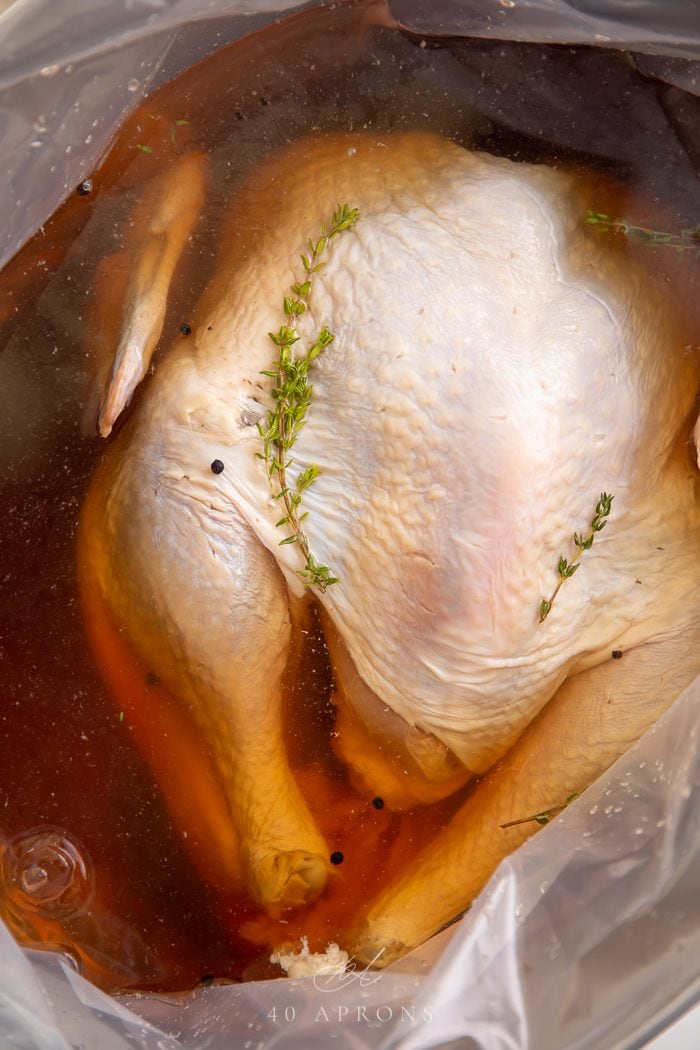
I’ve been brining my poultry for years now, and it truly makes all the difference when it comes to juicy and tender meat. Don’t skip it this year!
Wondering how much turkey to serve based on the number of people at your holiday dinner? Check out this post for all the details!
Why This Recipe Is So Good
- This is a super simple brine that you can fancy up based on your tastes. At its core, all you need is the salt and the water.
- It’s easy to do and results in an amazingly flavorful turkey.
- This method results in succulent and crispy turkey every single time!
What Is Brining?
Brining means soaking your turkey in a salt solution, creating a moist and flavorful bird. It also means balancing a huge bucket in your fridge in which to dunk your turkey, which is about twice the size of a newborn human. It really does elevate your store bought turkey to a restaurant quality feast!

What’s the best turkey for brining?
If you buy a kosher turkey, do not brine, as it already has a high salt content. This, however, means that a kosher bird is essentially already brined for you and results in a highly flavorful bird without the threat of flooding your kitchen floor with saltwater.
The point? Get a kosher turkey if you can. If you can’t, or don’t want to, try getting a self-basting bird, which has the same effect. No go? Brine, baby. Brining really will make quite a difference, and it’s pretty simple.
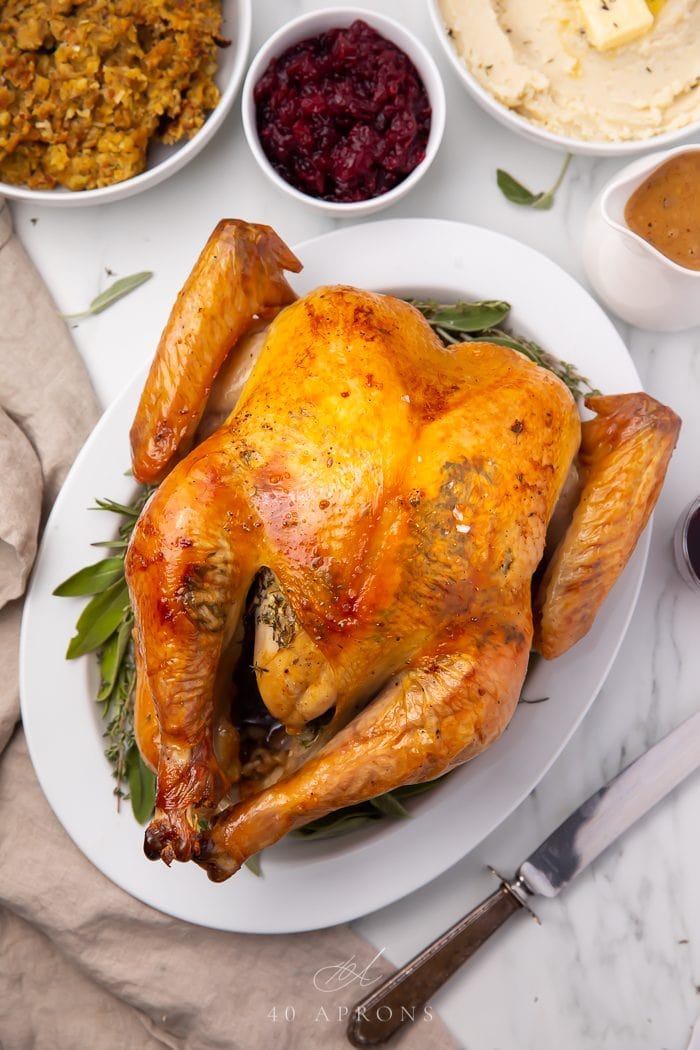
What salt should you use for brine?
The kind of salt you use matters, for this recipe I use table salt, and I recommend that’s what you use here.
If you chose to use kosher or sea salt for brining, you will need to adjust the amounts used. You can find a salt calculator here, which will help you calculate the salt to water ratio.
Mix 1/2 cup table salt for every 1 gallon water. This is the ratio you’re working with, though you’ll need more than one gallon of water. Do not use another type of salt here, guys.
If you read another recipe that sounds rad, follow it exactly. Different types of salt (sea salt, kosher salt, table salt) have different levels of saltiness, and you can end up with an unintended result if you stray from the recipe
What type of container should you brine a turkey in?
There are several options for the container used to brine the turkey. Try using a brine bag from the grocery store OR a food-safe bucket from the hardware store. You can also use a very large stockpot or water bath container for sous vide recipes like the ones in my Sous Vide Eggs or Sous Vide Chicken Breast recipes.
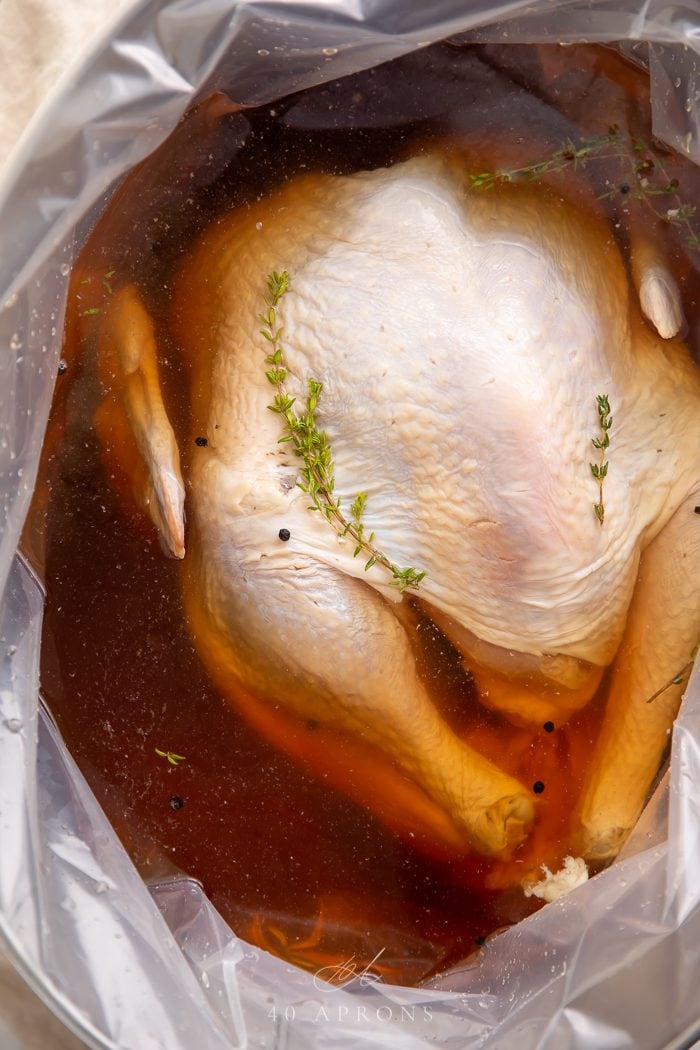
Chef’s Tips
- Don’t brine a kosher turkey, it already has a high salt content.
- Make sure the turkey is completely submerged in the brine – you can weight it down with a large plate with weights or cans on top.
- Don’t over brine your turkey or it will be too salty
- Don’t salt your turkey after brining like you normally would.
- Put the turkey in the container breast-side down (this is NOT what the turkey is doing in my photos, but I didn’t want to show off the turkey butt!).
- Follow the recipe precisely for the salt and water ratio and use table salt.
- Add in your favorite herbs if you wish.
Want to know more about brining? Try the Serious Eats Food Lab for the science and a comparison, the basic Cook’s Illustrated recipe we use, or try a fancier recipe at Good Eats by Alton Brown.
And Don’t Forget the Sides!
- Roasted Radishes with Brown Butter
- Whole30 Sweet Potato Casserole
- Whole30 Crockpot Mashed Potatoes (vegan)
- Whole30 Green Beans
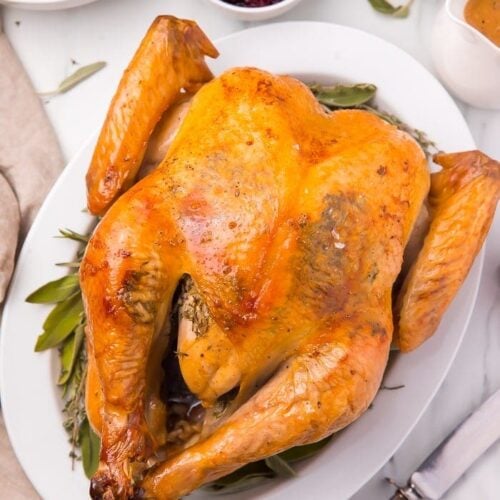
How To Brine A Turkey
Ingredients
- 1 ½ cups table salt
- 3 gallons water
- ⅔ packed cup brown sugar optional, see Notes for keto
- 1 tablespoon peppercorns optional
- 3-5 pieces sprigs fresh thyme optional
Instructions
- The day before roasting, first thing in the morning, make your brine. Mix salt and water together until dissolved.Place the brining bag in the bucket and put the bird in breast-side down. Pour the brine into the bag, making sure the entire bird is covered–no naked bits. Zip the bag up, cover, and put in the fridge. If you don’t have space in your fridge, you can use a cooler.
- Refrigerate for 12 hours.
- Take the turkey out and rinse under cold water. Pat dry with paper towels, making sure to dry the inside of the cavity, too.
Air-Dry
- Return to the refrigerator in a roasting pan and let air-dry overnight. This helps develop crispy skin, since there will be no excess moisture in or on the turkey to create steam when roasting.
- Don’t brine a kosher turkey, it already has a high salt content.
- Make sure the turkey is completely submerged in the brine – you can weight it down with a large plate with weights or cans on top.
- Don’t over brine your turkey or it will be too salty
- Don’t salt your turkey after brining like you normally would.
- Put the turkey in the container breast-side down (this is NOT what the turkey is doing in my photos, but I didn’t want to show off the turkey butt!).
- Follow the recipe precisely for the salt and water ratio and use table salt.
- Add in your favorite herbs if you wish.
- Make it Keto: Use Brown Swerve instead of brown sugar.
Approximate Information for One Serving
Nutrition Disclaimers
Number of total servings shown is approximate. Actual number of servings will depend on your preferred portion sizes.
Nutritional values shown are general guidelines and reflect information for 1 serving using the ingredients listed, not including any optional ingredients. Actual macros may vary slightly depending on specific brands and types of ingredients used.
To determine the weight of one serving, prepare the recipe as instructed. Weigh the finished recipe, then divide the weight of the finished recipe (not including the weight of the container the food is in) by the desired number of servings. Result will be the weight of one serving.
Did You Make This Recipe?
Tag @40aprons on Instagram and be sure to leave a review on the blog post!
Never Miss A Meal!
New Recipes Straight To Your Inbox
A curated selection of our most recent recipes, delivered straight to your inbox once a week.
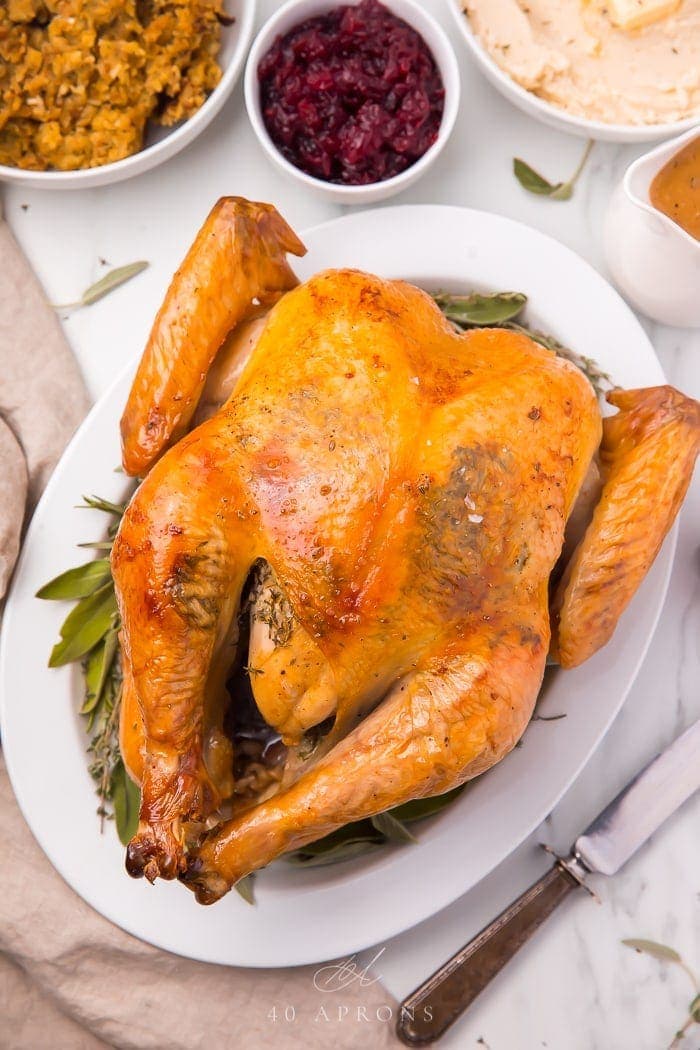
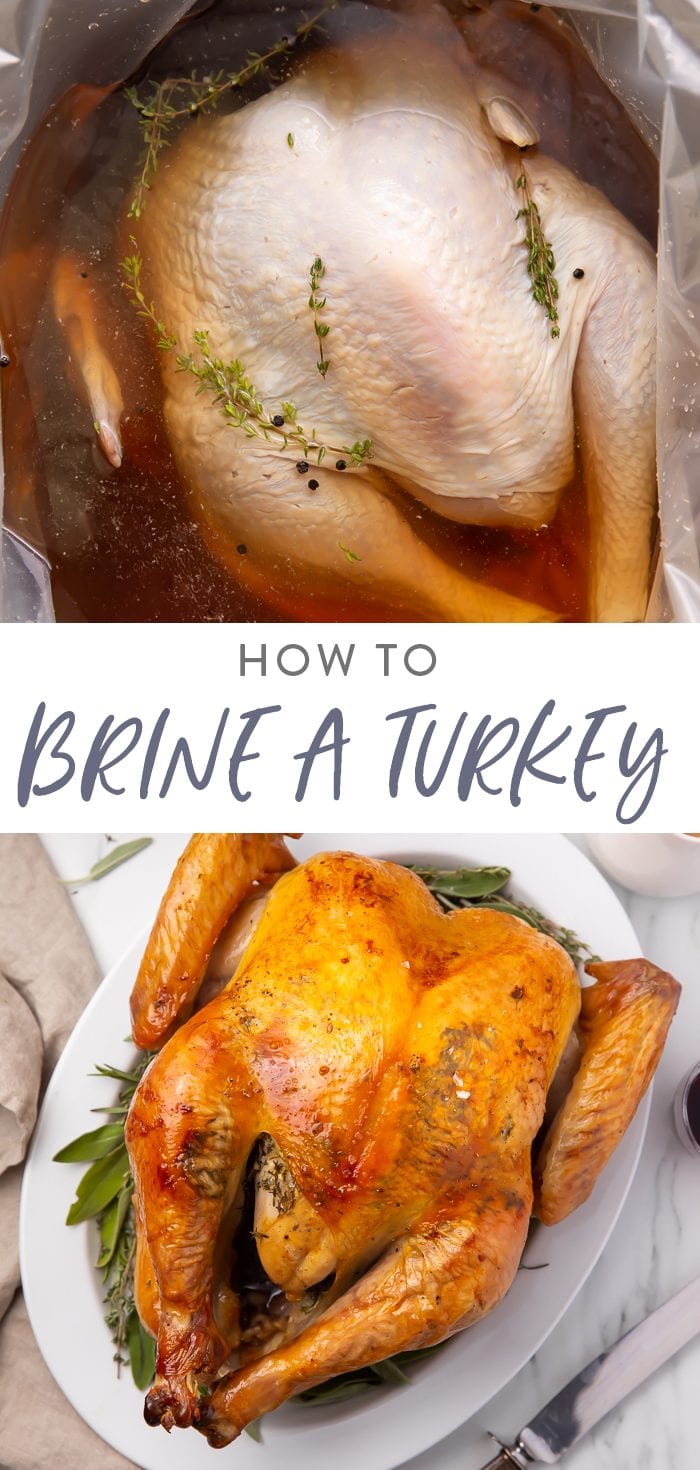
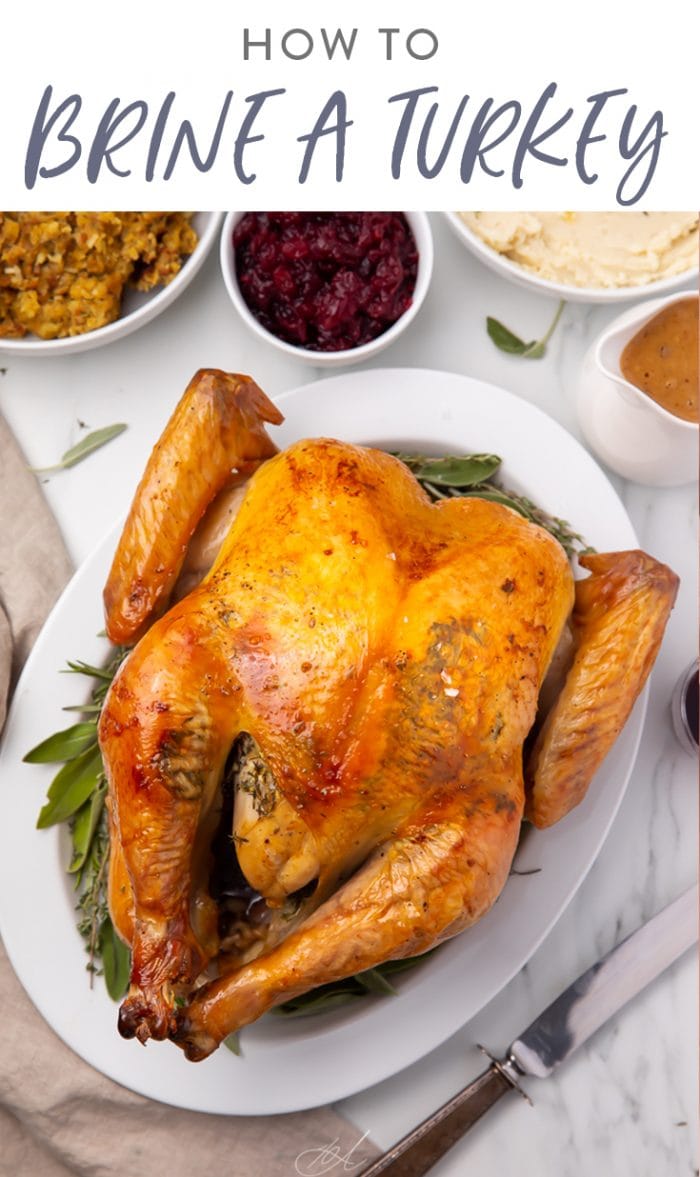
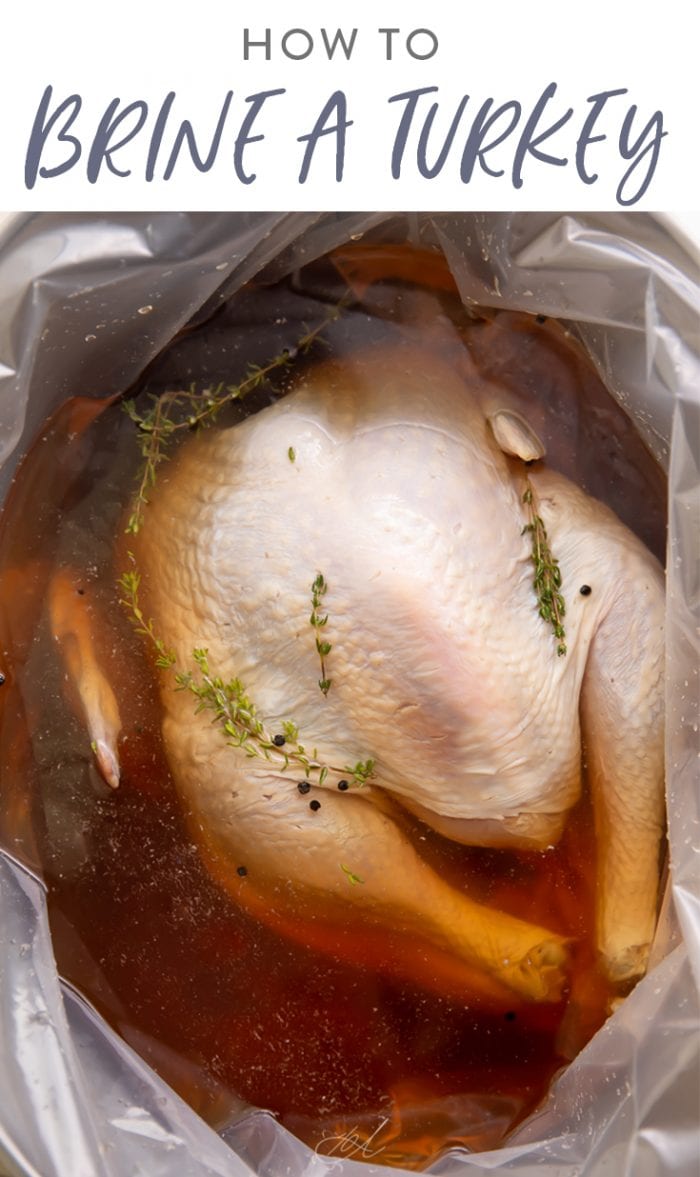
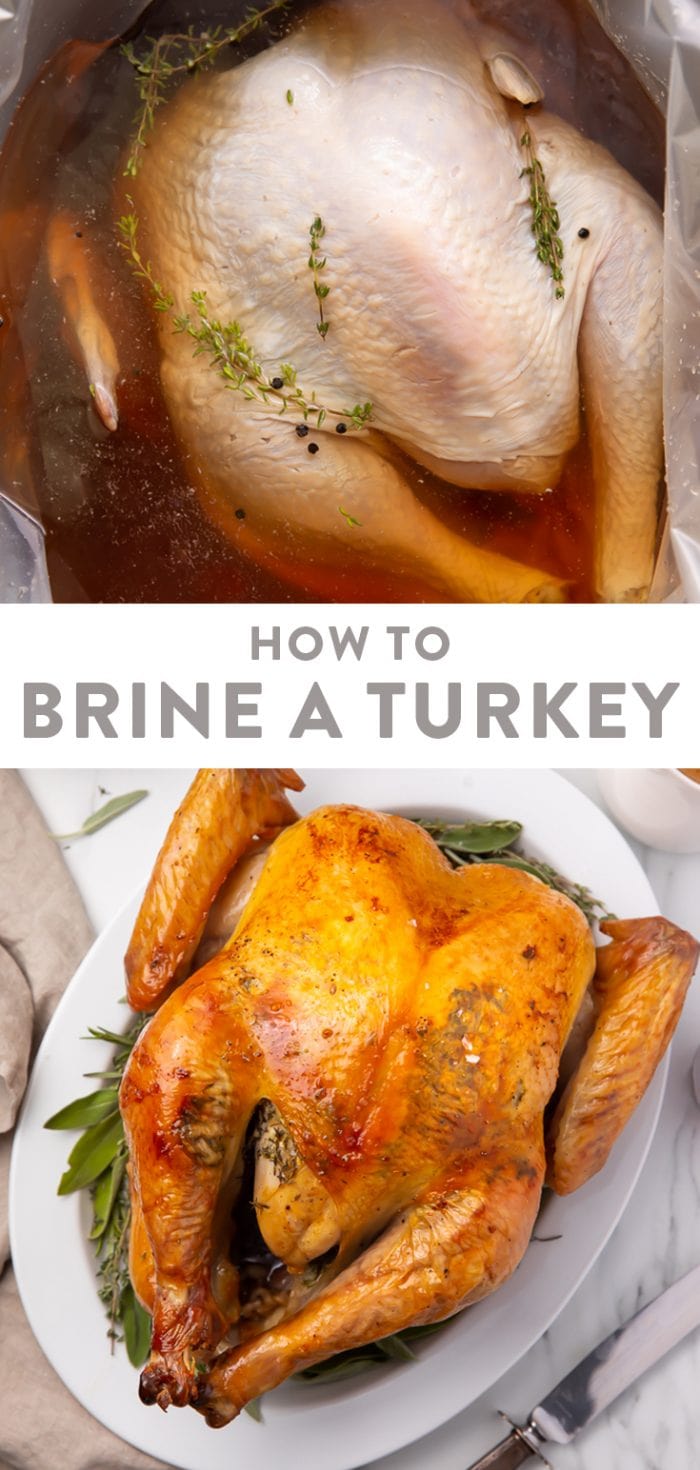
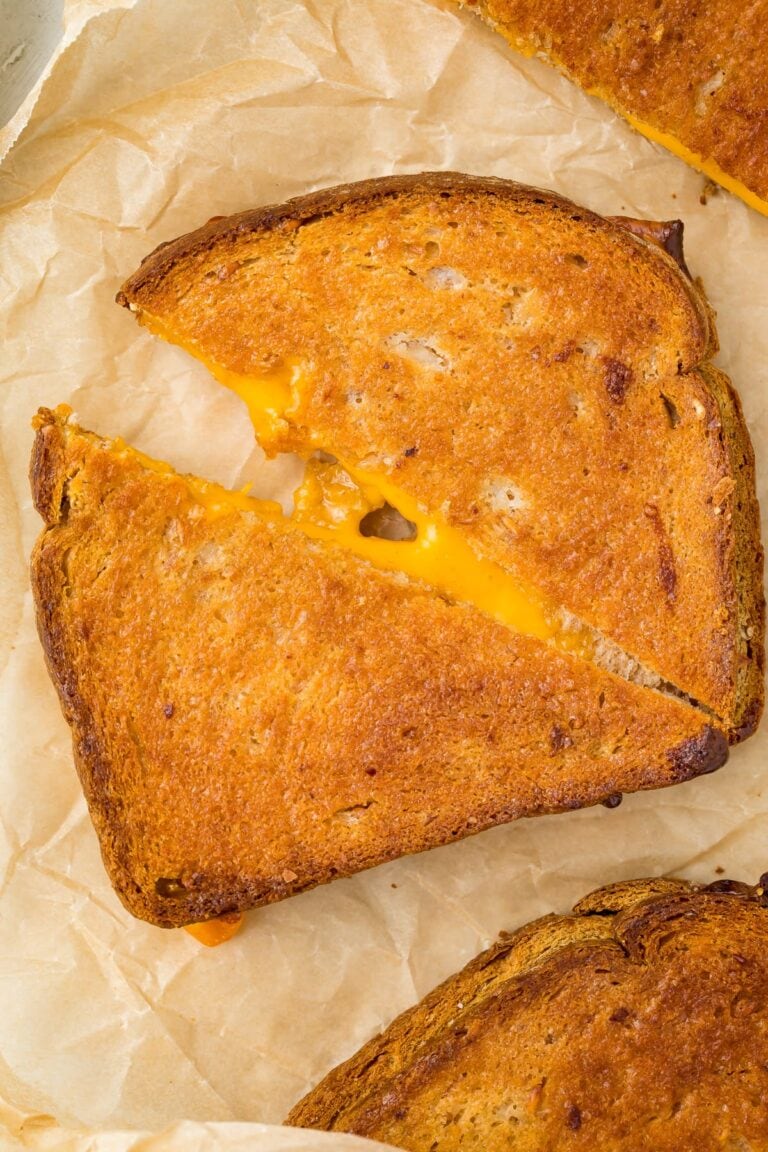
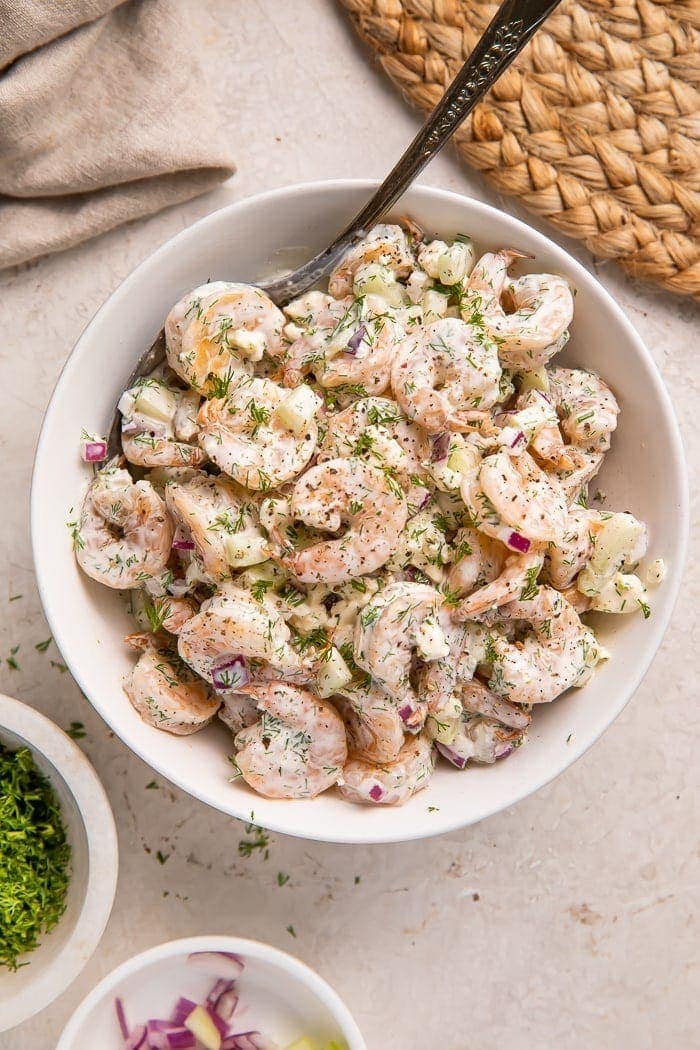

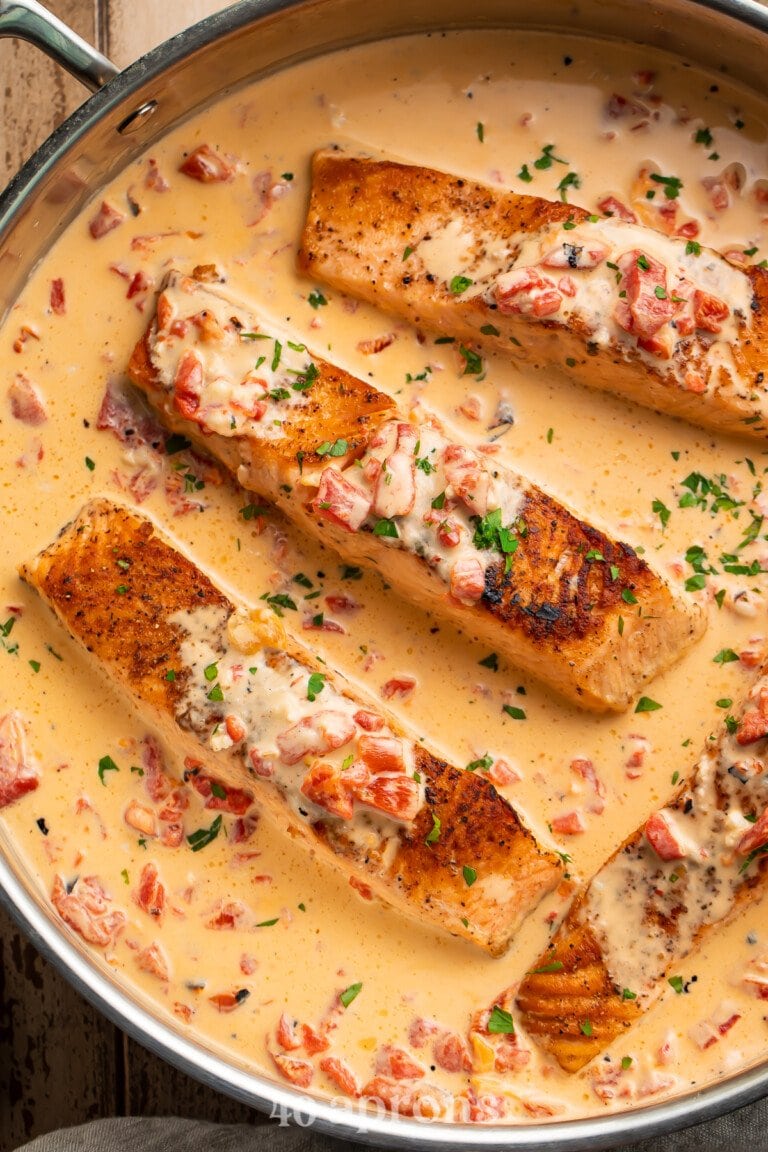
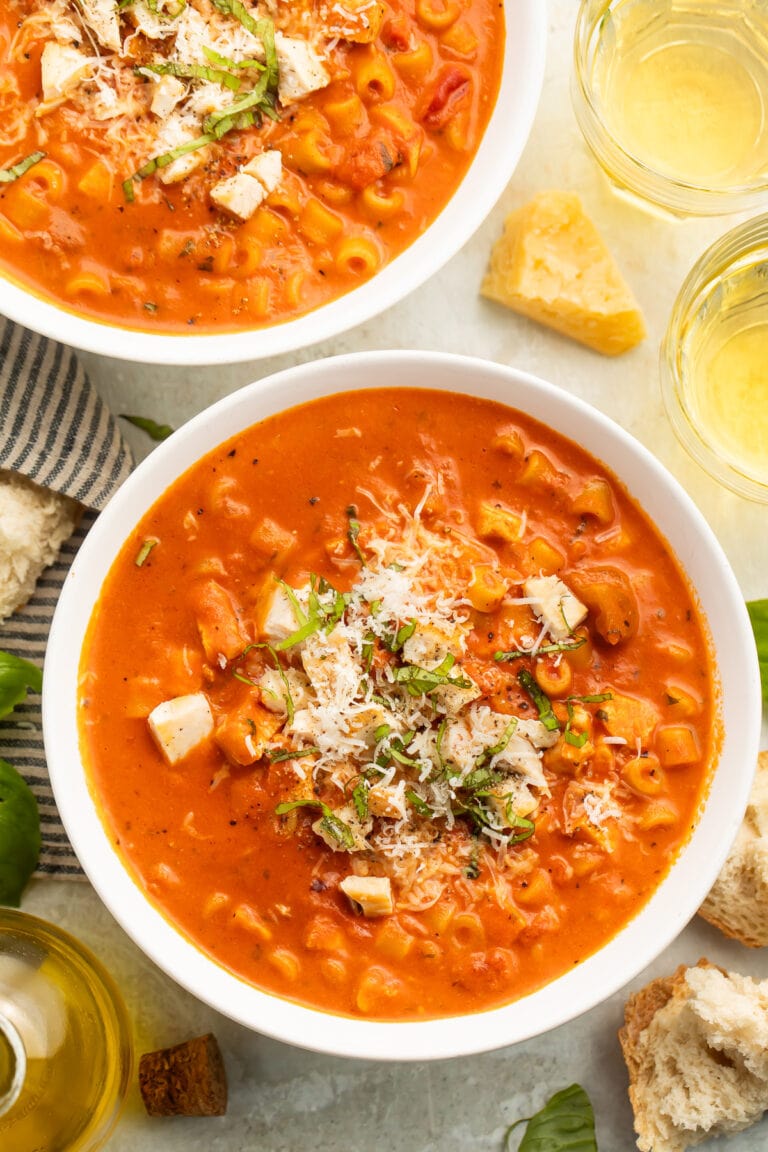
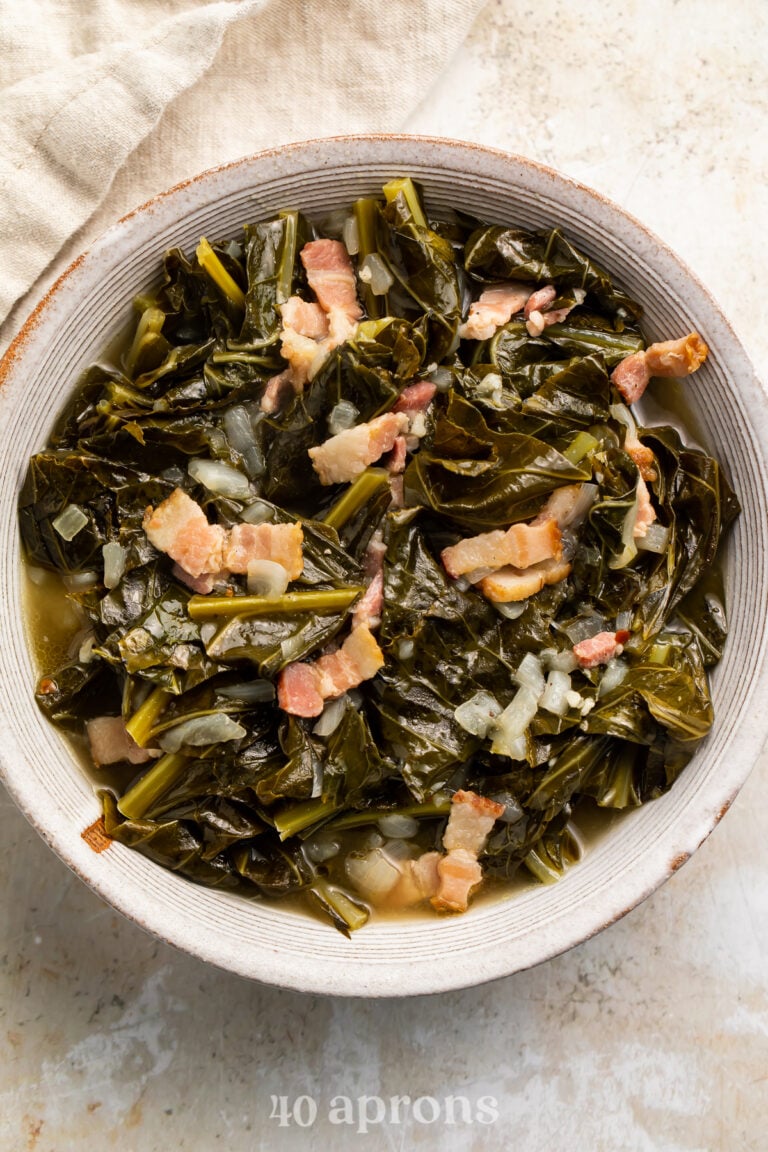










Hi Cheryl!
My turkey is just in the brine now, but I had to use a cooler. My question is, do I have to keep adding ice to keep it cold enough to be safe? The brine feels room-temperature-ish right now. Is it safe?
Thanks for the inspiration, I can’t wait to get it in the oven tomorrow!
Hi, Michelle! So sorry for the delayed response! You can definitely keep adding ice if you feel the brine getting too warm. Hope the turkey turned out beautifully!
Can I add rosemary instead of thyme?
Of course!
I accident bought a pre-brined turkey (3% salt solution). I still want to brine it but I’m worried it will be too salty. Any advice?
If it’s already been brined then you definitely don’t want to brine it again!
Is it ok to use this same brine for a turkey breast?
You will definitely have to adjust the salt and water content! Try 8 cups of water, 1.5 salt, 1.5 sugar, and let us know how it goes! Refrigerate for 6 hours.
Can you stuff a brined turkey when you bake it? Can you season the turkey the way you normally minus the salt or is minimal seasoning the best way to go. I’ve obviously never done this before. Thank you.
Stuffing a brined turkey may cause a little too much “salt” in the stuffing, but feel free to adjust the seasoning! This recipe is helpful! https://40aprons.com/how-to-cook-turkey-gravy/
Frozen turkey has to be thawed before brining right?
Great question, Mary! You definitely want to make sure you thaw the turkey first to avoid an excess of water 🙂